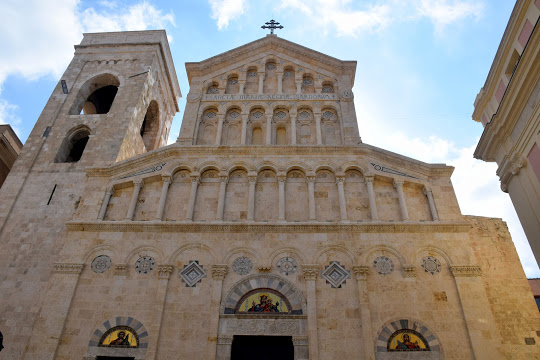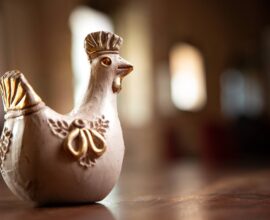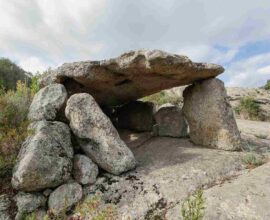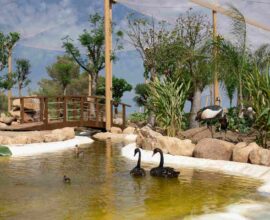Site seeing: the cathedral of Santa Maria Assunta
The cathedral of Santa Maria Assunta: history of a symbolic building of Cagliari
“It’s a beautiful city, sour, stony, shades of color from the rock to the African plain, the lagoons, with a visible, readable history in the stone, like the marks of time on a face…”
These are the words of Carlo Levi as he describes Cagliari, named Casteddu in Sardinian, where, in the Castello district, you can find one of the most famous places of worship in the region: the cathedral of Santa Maria Assunta.
This building holds over 800 years of the city’s history, a town in continuous evolution but always maintaining its identity. In the past it was called Krly by the Phoenician-Punics and Caralis in Latin. Legend says it was founded by Aristaeus, son of Apollo and huntress Cirene. He arrived in company of Dedalo, creator of the ancient stone constructions, still present on the island, called Nuraghi.
The cathedral is between Palazzo Reggio (or Viceregio), it was once the residence of the king’s representative and today is seat of the Prefecture and the Ex Palazzo Città in Piazza Palazzo. Cagliari was the capital of the Regno di Sardegna and holds the history and culture of many thousands of years, a vibrant and interesting city to which one always wants to return.
The triptych and the sacred thorn: the cathedral of Santa Maria Assunta
Built on 7 hills just like Rome, Lisbon, Prague and Istanbul, the cathedral is embraced by the crystal clear sea and caressed by the sun. It’s protected by the Golfo degli Angeli over which, in the sky, a legendary battle took place between good and evil. The skylines of Cagliari seduce the eye from the lower part of town to the top, where the Cathedral of Santa Maria Assunta is located. This building, symbol of Cagliari, is in the Castello district and is home to two treasures.
Built during 200 in a Romanic-pisan style, it became cathedral in 1258. There have been many interventions over the years which are visible in the many different artistic styles it features, and when the kingdom of Sardinia made Cagliari its capital, the cathedral hosted the oath between the representatives of the three parts (bracci) of the Sardinian parliament.
A place of worship and also one of the most visited monuments of the city, the cathedral was built by the Pisans and originally had a rectangular plant divided by columns into three naves, a cross vault on the two lateral naves and a wooden ceiling in the central nave. Like the cathedral in Pisa it’s dedicated to Santa Maria Assunta. After the destruction of the cathedral of Santa Cecilia in 1258, what was named the church of Santa Maria di Castello was elevated to being a cathedral and within its name, besides being Santa Maria Assunta, was also worshiped Santa Cecilia. The transept changed the plant of the church into a Latin cross and the first gothic dome was built in XIV.
These were the first transformations, but when the Aragonese conquered Cagliari the church was restored in the XVIII century and the baroque facade was demolished at the beginning of the 20th century, substituted with the present neoromanic facade in pisan style.
The most interesting intervention on the church is the Aragonese dome, built during the period of the Aragonese and also called dome of the sacred thorn, because it holds a precious treasure: a thorn from Jesus’s crown. The relic is connected to a story from 1527, during the violent sacking of Rome by the Lansquenets who desecrated many churches of the city and stole furniture and sacred objects from the private apartment of Pope Clemente VII.
The mercenaries took the precious treasures, including the sacred thorn and the triptych, far away from Rome, when going towards Sardinia from Gaeta, they were hit by a terrible storm. At that point, thinking that the violent sea was a punishment from God, some of the men confessed their sins to the religious men on board of the ship who told everything to the Archibishop once they arrived in Cagliari. When Pope Clemente VII knew about what had occurred, he decided to donate the Triptych and the Sacred thorn to the Aragonese dome, where they are still kept today and exhibited every year during the feast of the assumption.
When and why visit the Cathedral of Santa Maria Assunta
Cagliari is many cities all in one. It’s sunny and lively and has breathtaking views of land and sea, a corner of paradise made by the loving hands of Mother Nature, it’s home to many fascinating legends and stories, a place of faith, art and culture, where you can absorb all its beauty.
If there is a place where present and past meet, taking you on a journey to discover ancient traditions, dreams and hopes, battles and rebirths which have left a mark on the Sardinian capital, that place is surely the cathedral of Santa Maria Assunta, absolute keeper of the city’s secrets.
The cathedral is open during working days from 08,00 to 13,00, and from 16,00 to 20,00
And on public holidays it’s open from 8,00 to 13,00 and from 16,00 to 20,30.






